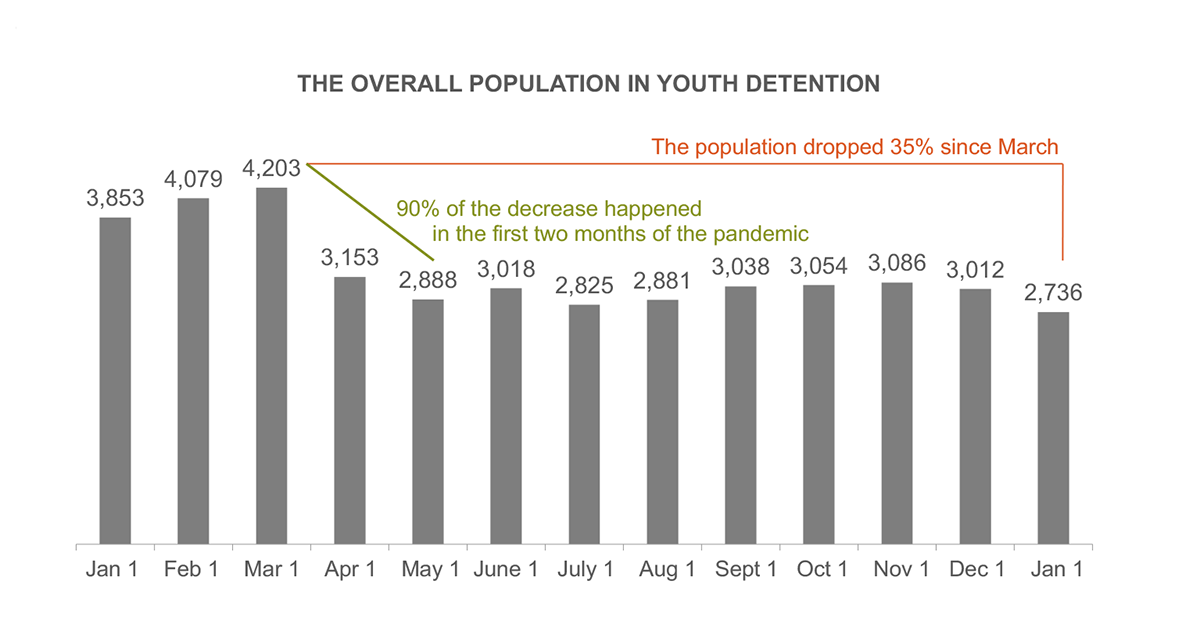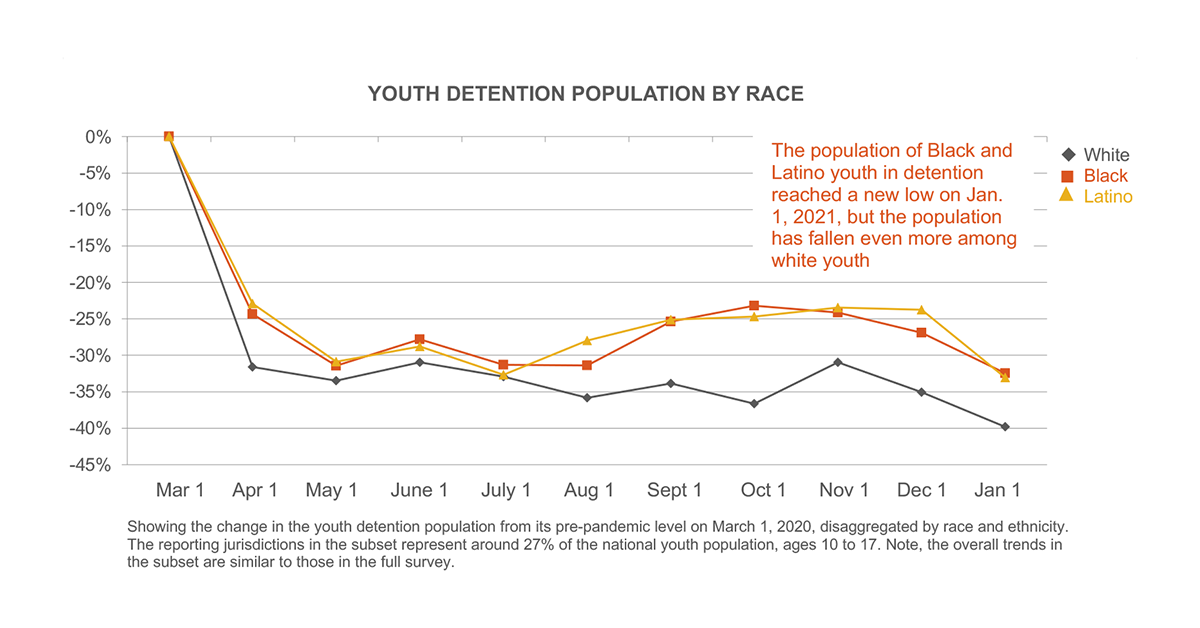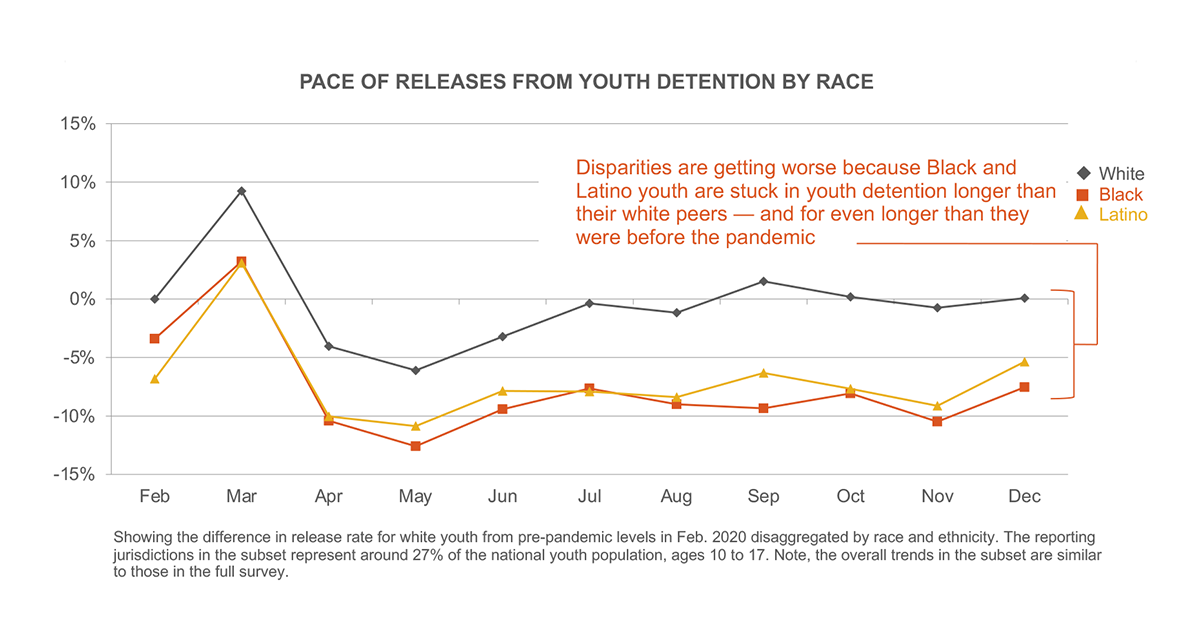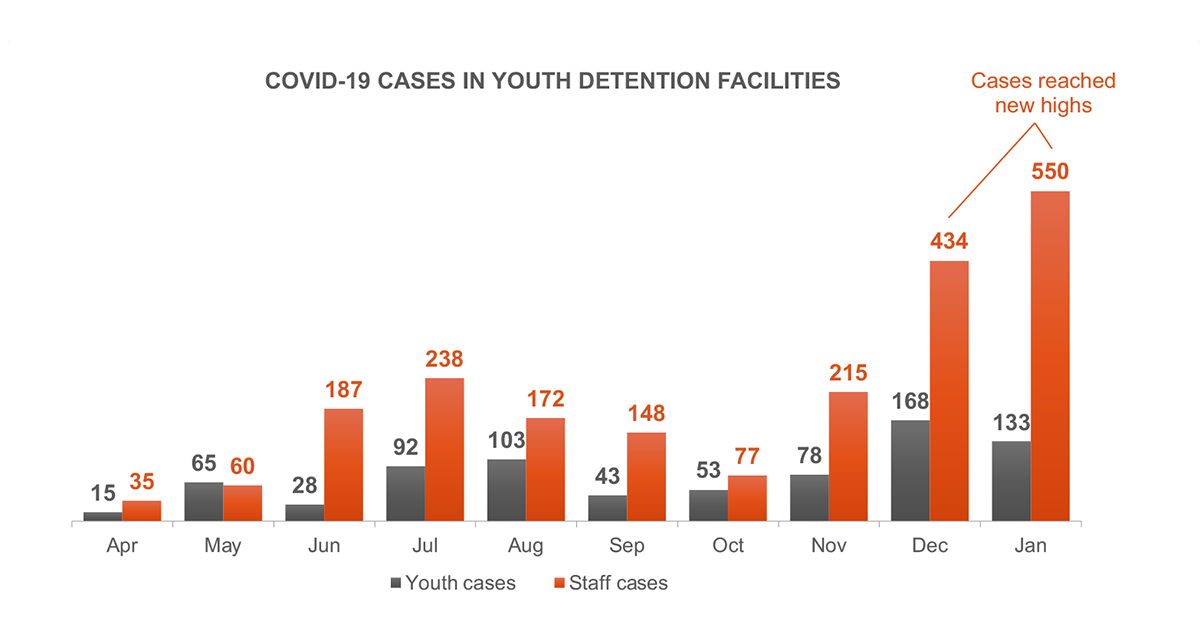Juvenile Justice Is Smaller, but More Unequal, After First Year of COVID-19
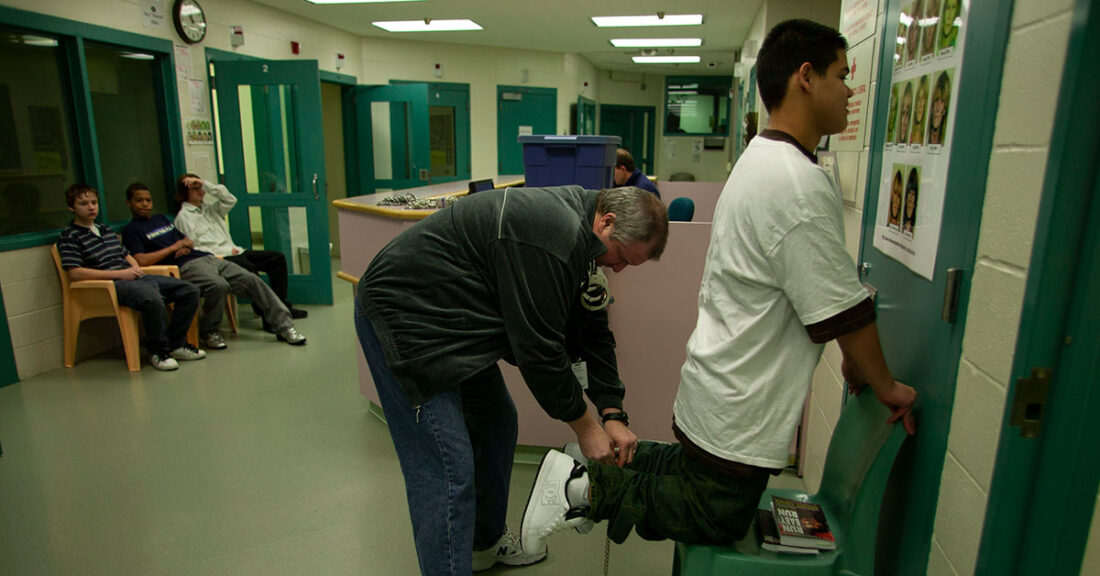
A year after the coronavirus pandemic began, the Annie E. Casey Foundation finds that a historic drop in the size of the youth detention population at the beginning of 2020 did nothing to reduce the already huge racial and ethnic disparities in who gets detained, despite the health concerns of confinement during the pandemic and a national reckoning about racial justice. In fact, the overrepresentation of Black and Latino youth in detention was worse at the start of 2021 than it was the year prior.
The Foundation’s findings are based on a new survey that measured month-to-month changes in the use of secure detention by juvenile justice agencies in 2020. The Foundation captured trends in close to real time from more than 140 jurisdictions in 33 states, representing more than 30% of the nation’s youth population (ages 10 to 17).
Admissions to detention for all youth, regardless of race or ethnicity, plummeted in 2020. However, of the youth in detention, Black and Latino youth were more likely to linger there than their white peers, who were quicker to be released.
“Jurisdictions are striving for greater equity and less reliance on detention, but they cannot advance those goals unless they find ways to expedite releases from detention for Black and Latino youth,” said Nate Balis, the director of the Foundation’s Juvenile Justice Strategy Group.
The following charts tell the story.
On Jan. 1, 2021, detention facilities participating in the survey held about 35% fewer young people than on March 1, 2020. Ninety percent of that decrease happened in the first two months of the pandemic (from March 1 to May 1, 2020). Since then, the detention population has fluctuated within a narrow range, gradually rising in the summer and fall of 2020 and then falling in November and December. The population in detention is a function of two things: how many young people are admitted, and how long they stay. A slowdown in the monthly release rate has been pushing the youth detention population significantly higher.
If the release rate had stayed at its peak level of 64% in every month since March, one of every three young people in detention at that time would have been home.
However, racial and ethnic disparities have worsened as white youth were released at a faster rate than their non-white peers. Among survey sites that provide data disaggregated by race and ethnicity, the detention population fell by more than 30% across all groups from March 1 to May 1. But since then, trends have diverged, favoring white youth. From May 1, 2020, to Jan. 1, 2021, 10% fewer white youth were detained, compared with 2% fewer Black youth and 3% fewer Latino youth.
When the pandemic took hold in March, systems accelerated releases across all racial and ethnic groups. Over the summer and fall, disparities in the release rate grew substantially. As a result, by the end of 2020, the gap in the rate at which white youth and youth of color were released was nearly twice as large as before the pandemic, growing from four percentage points in February to seven percentage points in December. If all youth had been released at the same rate as white youth in every month since the start of the pandemic, the non-white population on Jan. 1, 2021, would have been 28% lower than it was.
Against this backdrop, it is especially concerning that December and January saw the highest prevalence to date of COVID-19 cases among both youth and staff in detention centers. On the day they completed the January survey, jurisdictions reported 133 active cases among youth and 550 active cases among staff.
These year-end findings demonstrate an urgent need for juvenile justice agencies to overcome obstacles to expediting releases from detention, especially for young people of color. Systems can use proven approaches to accelerating releases from detention and ask themselves tough questions to guide their response to the pandemic.
The Foundation will continue its monthly survey of juvenile justice throughout 2021 to assess the effects of the pandemic on juvenile justice systems.
Empact Solutions has contributed to data collection and analysis efforts since the youth detention survey launched in April 2020.



